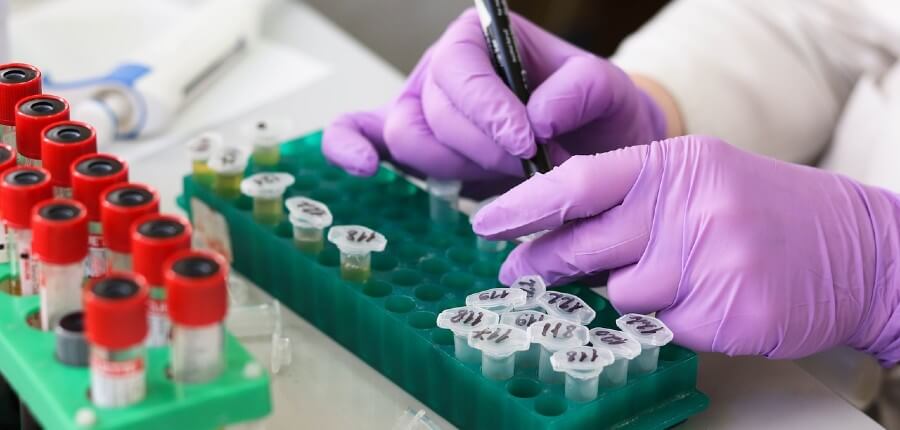If you’re an animal advocate, you’re probably used to having friends and family come to you for knowledge and guidance on almost any animal-related issue. While you might be fluent in the cruelty of the fur trade or an expert on all the latest tasty vegan products (someone has to test that newest flavor of vegan ice cream, right?), when the conversation turns to testing on animals, many of us feel a bit tongue-tied.
Don’t worry—we’ve got you covered! Here’s a simple breakdown of the most common tests that are performed on animals along with information concerning why the results of those tests are misleading and the superior methods that can replace them.
Vaccine Testing
Before new vaccines end up in your doctor’s office or pharmacy, they’re typically required to go through years of tests on animals. Regulatory agencies claim that this is to determine whether vaccines are safe and effective, but testing on other species is a shot in the dark, at best. In fact, 95% of drugs that pass animal tests fail in human trials because they’re ineffective or dangerous, according to the National Institutes of Health (NIH). For example, more than 100 HIV/AIDS vaccines have been successful in experiments on animals, but not one of them has made a substantial difference for humans.
Nonetheless, there are signs of hope: As the race to find a COVID-19 vaccine has shown, the typical lengthy process of testing vaccines on animals simply isn’t necessary. Bypassing cruel and misleading tests on animals and instead relying on faster and more human-relevant non-animal tests before going to human trials can shave years off the vaccine-development process—and save countless lives.
Systemic Toxicity Testing
Systemic toxicity testing on animals is an outdated and crude attempt to determine how dangerous exposure to a chemical or substance is. One notorious version of this test has been around since World War I: the lethal dose 50 percent (LD50) test. It involves force-feeding groups of animals increasing amounts of a test substance or applying it to their skin until half of them die. There are many sophisticated ways to test toxicity without harming animals, including cell-based tests and computer models.
Carcinogenicity Testing
Rats and mice are often used in tests that try to assess the carcinogenicity (cancer-causing potential) of various substances. For up to two years, hundreds of animals are exposed to a test substance by inhalation, ingestion, injection, or smearing it on their skin. Then, they are killed so that their bodies can be examined for signs of cancer. Tests on rodents, though, don’t accurately predict whether a substance will cause cancer in humans. Modern non-animal tests, such as in vitro methods, use cell, tissue, or organ models outside of a living organism to measure the tumor-initiating activity and tumor-promoting activity of a substance and are much more reliable—not to mention humane.
Skin and Eye Irritation/Corrosion Testing
These crude tests are just as painful as their names imply. They involve applying substances to rabbits’ eyes or smearing them onto their shaved skin and recording the damage—which can include inflamed skin, ulcers, bleeding, bloody scabs, swollen eyelids, irritated and cloudy eyes, and even blindness. These tests are not reliable predictors of human skin and eye reactions and can be replaced with advanced and accurate methods, such as cell tests or 3-D skin or eye tissue models.
Skin-Sensitization Testing
To test for allergic responses (also called “sensitization”), a substance is injected under guinea pigs’ skin or applied to the ears of mice, who are later killed so that their lymph nodes can be removed and their immune response measured. Instead of using living, feeling beings, this type of testing can be performed in test tubes or by using cells that react to substances the same way that human skin does. In fact, extensive studies have shown that various non-animal methods predict the human response as well as or better than the animal tests.
Curiosity-Driven Testing
Many tests fall into the “curiosity-driven” category, which is also known as “basic research.” This means that they are done without a clear goal in mind. Instead, animals used in these tests suffer and die in an experimenter’s quest to publish papers and seek more funding.
For example, experimenter Elisabeth Murray conducts “emotional responsiveness” tests on dozens of monkeys in her laboratory at the National Institute of Mental Health, which is part of NIH in Bethesda, Maryland. She saws open their skulls and injects toxins to destroy their brain cells or suctions out parts of their brain. She forces them to live in social isolation, surgically implants devices into their skulls, deliberately provokes their worst fears, just to see how they will react, and then kills them. Murray has spent more than $36 million in public funds in the past 13 years alone to torment monkeys, yet not one treatment or cure for humans has come out of her laboratory in 30 years.
Ideally, basic research produces foundational knowledge for a better understanding of the causes of disease in humans. When other animals are left out of the equation, there is a far greater likelihood that this will happen. Human-relevant, curiosity-driven research may include the use of human tissues and cells in in vitro studies, human data, non-invasive imaging using human volunteers, and observational studies.
A Test of Ingenuity
The good news is that scientists are increasingly moving away from their reliance on animals for these tests. With your support, PETA is leading the way in promoting and funding the development and use of cutting-edge non-animal testing methods. These methods are saving animals from painful, deadly experiments—and they’re saving human lives by producing fast, accurate results.





